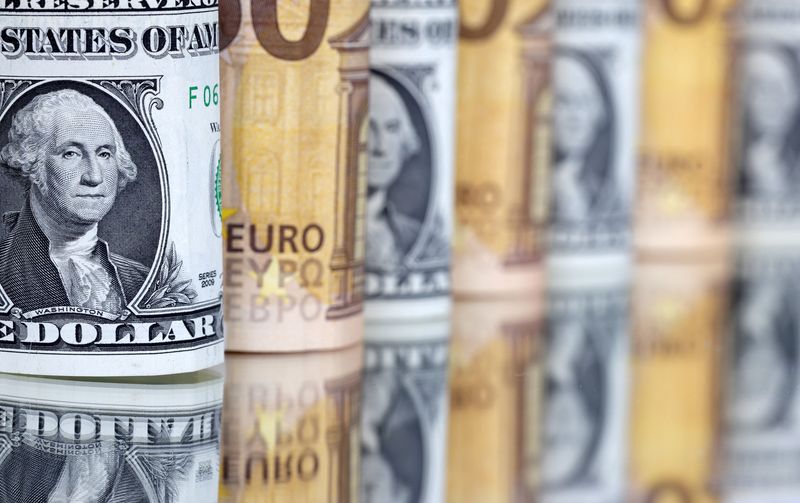Dollar holds ground as macro data hints at later Fed rate cut
2023.11.16 03:11

© Reuters. U.S. Dollar and Euro banknotes are seen in this illustration taken July 17, 2022. REUTERS/Dado Ruvic/Illustration/File Photo
By Kevin Buckland
TOKYO (Reuters) – The dollar held its ground on Thursday after a volatile two days that saw sharp declines followed by a rebound as traders took incoming economic data as signalling the Federal Reserve will wait longer before cutting interest rates.
The risk-sensitive Australian and New Zealand dollars sank amid a decline in regional equities.
The U.S. currency edged up to $1.08395 per euro and $1.2395 against sterling, while trading largely flat at 151.33 yen after mounting a recovery on Wednesday from its steepest declines against major peers in a year.
The – which measures the greenback against the euro, pound, yen and three other rivals – added 0.14% to 104.47. It gained 0.31% on Wednesday, following a 1.51% plunge the previous day.
The dollar drew support from better-than-expected retail sales numbers combined with more signs of a cooling of inflation, feeding into the narrative for an economic ‘soft landing’, which would allow the Fed more time before cutting rates.
“While inflation is falling, the economy remains robust, which might even allow the Fed to increase rates if they chose,” said James Kniveton, senior corporate FX dealer at Convera, while noting there doesn’t seem to be appetite for a hike among Fed officials currently.
Traders remain certain that rates will not go higher, but have trimmed the odds for a first reduction by March to less than 1-in-4 from better than 1-in-3 a day earlier, according to the CME Group’s (NASDAQ:) FedWatch Tool.
Ben Bennett, APAC investment strategist for Legal and General Investment Management, was more cautious on the outlook.
“It’s a narrow path to a soft landing, and this is just one step on that path,” he said.
“We could very easily get more data in the coming weeks that suggests the Fed needs to hike again, or indeed that growth is rolling over and a recession is more likely.”
Elsewhere, the slid 0.45% to $0.6480, and the New Zealand dollar declined 0.62% to $0.59855.
Australia’s currency failed to draw support from a strong rebound in employment, as traders keyed on the fact that gains were mostly in part-time labour, while the jobless rate actually ticked higher.








